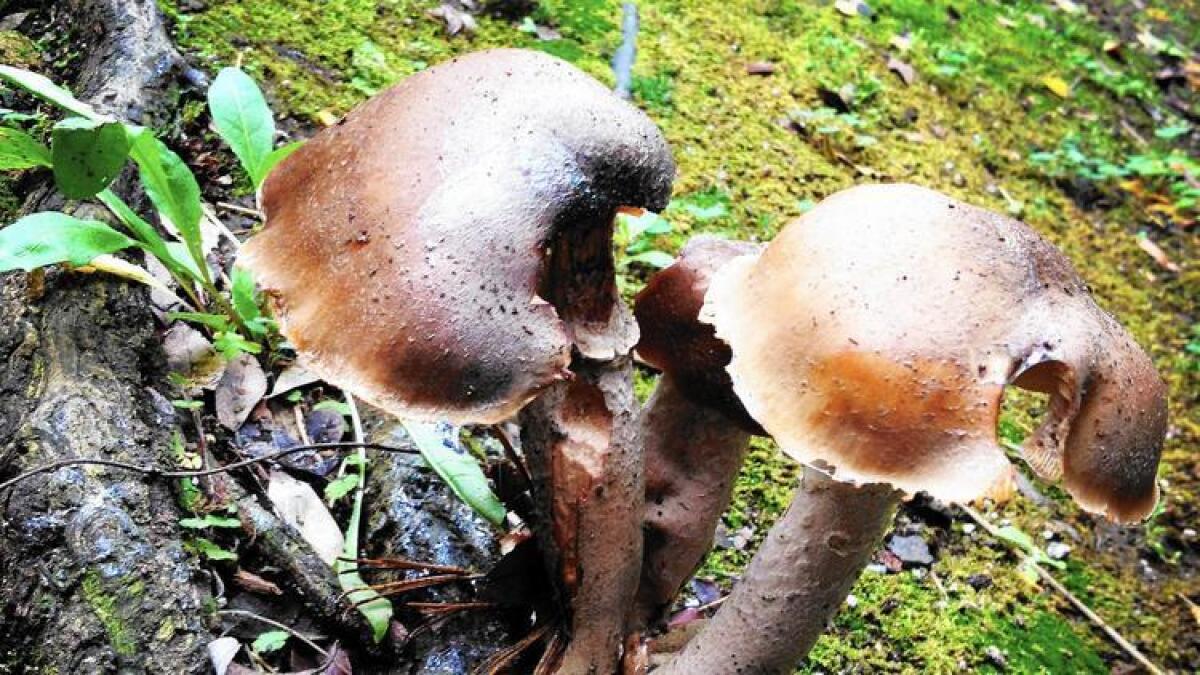A mushroom hunter studies L.A.’s little ecological aides

Recent rains mean amateur and professional mycologists in Southern California can head outdoors again with renewed enthusiasm. Mushroom expert Gary Lincoff, a longtime teacher of plant studies at the New York Botanical Garden and author of books including “The Complete Mushroom Hunter” and “The Joy of Foraging,” is scheduled to visit L.A. in February to talk about the fungi at a couple of events. He recently spoke to us by phone from his home in Manhattan.
What are the outstanding mycological aspects of the L.A. area?
There’s much more diversity up north. But what makes the L.A. area special is, because it’s arid, every single mushroom you find is special. When you see a mushroom — if you see one or a couple in Griffith Park, for example — those mushrooms are responsible, essentially, for the health of the park. ... Last year [in L.A.] I was mostly interested in what comes up in woodlands and native parts of parks because these are the ones that are really responsible for getting the nutrients to the plants, and that’s what I really wanted to see. ... What you’re looking for are what we call the “fruiting bodies,” and the real thing is underground; it’s in the roots in the soil and all sorts of things you can’t see.
Have you found any surprising gems here, and if so, where?
We started doing a survey of the mushroom flora in Griffith Park. We already know what the plants and animals are, but we don’t know what the mushrooms are like. Almost everything we find will be [previously] unrecorded; it’s not new to science, but it’s new for the area. We are always astonished by things we are finding in an area that’s not even a half-hour walk from where we park [near Travel Town]. If you saw us, you’d think, “What are they doing?” If a tree has fallen over, I look to see if anything is coming out of it.
What’s the best season for finding mushrooms in the region?
It would be now. If you go and you look, and if it’s at all wet, you will see things. The difference with plants and mushrooms is that with a plant, it should always be there, whereas, unless a mushroom is fruiting, it might not be [visible].
How have the historic drought and climate change affected mushrooms here?
It’s getting drier, and that’s not good. What has happened so far [this winter] has been so much better than it would have been. I think that before people conclude anything too drastic because of climate change, let’s see what goes on the next couple years. But no question, things are happening and change is going on.
Please help settle an ongoing debate: Wash mushrooms with water or wipe clean?
It depends on the mushroom. If when you look at the underside of the mushroom cap it’s a sponge, it will absorb water. Or if it’s a common commercial mushroom, it can become waterlogged. Better to take a paring knife and trim it, and get rid of the debris if you can. If you get too much water in mushrooms, you have to cook it out, and then you lose some of the flavor.
::
Mushroom expert Gary Lincoff “is a real jewel,” says Gerry Hans, president of a Griffith Park advocacy group that’s working with Lincoff on surveying fungi. Lincoff plans two public appearances in Los Angeles next month.
LECTURE
What: A talk titled “Mushrooms and Ecosystems … Connecting the Dots,” which Lincoff is presenting as part of the Friends of Griffith Park lecture series
When: 6:45 to 7:45 p.m. Feb. 5 (doors open at 6:30 p.m.)
Where: Los Feliz Branch Library, 1874 Hillhurst Ave., Los Angeles; RSVP required to [email protected]
Info: friendsofgriffithpark.org
APPEARANCE
What: Los Angeles Mycological Society Annual Mushroom Fair
When: 10 a.m. to 4:30 p.m. Feb. 8
Where: Los Angeles County Arboretum and Botanic Gardens, 301 N. Baldwin Ave., Arcadia
Info: lamushrooms.org, arboretum.org


